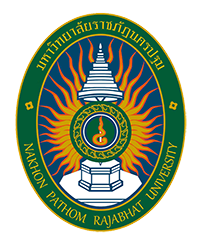 การประชุมวิชาการระดับชาติ ครั้งที่ 16
|
| Title | Generation Z and the Allure of Luck: A Cross-Cultural Analysis of Lucky Necklaces in Thailand and China |
|---|---|
| Other Titles: | วัฒนธรรมความเชื่อ:ความต่างในความเหมือนของสร้อยคอนำโชคของคนไทยและคนจีน GEN Z |
| Authors EN |
|
| Authors TH |
|
| Keywords | Belief ,Culture,Symbol,Gen Z |
| Issue Date | 13-Aug-2024 |
| Publisher | The 16th NPRU National Academic Conference Nakhon Pathom Rajabhat University |
| Abstract | This article investigates the similarities and differences between Thai and Chinese beliefs regarding lucky necklaces. It aims to understand the cultural significance of these necklaces in both societies. The study surveyed a sample group of third-year Business English Department students and ten exchange Chinese students at Nakhon Pathom Rajabhat University. A purposive sampling method was employed to select the participants, which included ten students from each group. The data collection process utilized a mixed-methods approach involving a questionnaire survey and 20 semi-structured interviews. The study findings will provide valuable insights into the language proficiency of the selected student groups. The finding was that a significant proportion (95%) of the participants showed keen interest in acquiring lucky charms. The principal domains of interest for auspicious fortune were financial prosperity (32.61%), romantic relationships (28.26%), health and well-being (21.74%), and career progression (17.39%). The driving factors that influenced their decision to acquire these charms were personal inclinations (65%), acquaintances (20%), public figures (10%), and parents (5%). Regarding preferred lucky symbols, diamonds (21.33%) and dragons (18.67%) topped the list. Other popular choices included pearls and jade (both18.67%), ruby (10.67%), the Chinese sailboat symbol (8%), zircon (6.78%), and the Tie Duo Yue symbol (6.78%). The survey participants suggested that a critical difference between Thai and Chinese beliefsregarding lucky necklaces lies in the role of religion. Thai participants emphasized religious beliefs more when choosing lucky necklaces, while Chinese participants were less likely to do so. However, both cultures shared a common belief in the importance of auspicious colors for enhancing the luck associated with necklaces. Interestingly, while Thai people generally use auspicious colors for confidence before leaving home, Chinese people favor red for its perceived good luck. This study highlights similarities and differences in the cultural beliefs surrounding lucky necklaces in Thailand and China. While both cultures value the potential for thesenecklaces to bring good luck, they differ in the factors influencing their choices, such as the role of religion and preferred colors. |
| ISBN | 978-974-7063-46-2 |
| URI | https://rdi.npru.ac.th/conference16 |